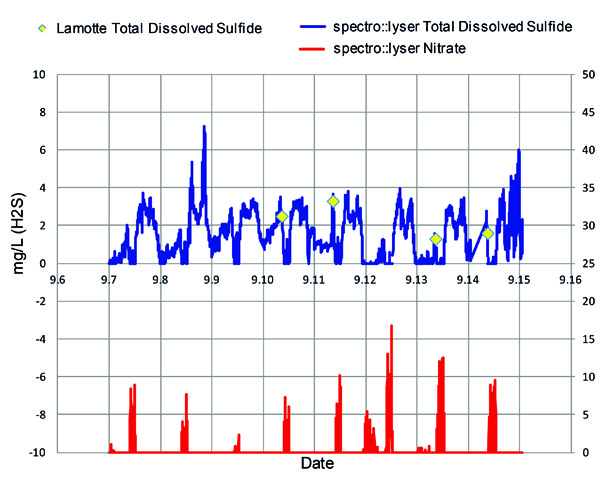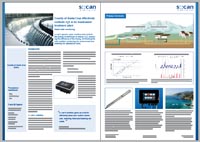s::can’s spectro::lyser monitors and controls the dosing of chemicals to reduce Hydrogen sulfide (H2S), improving the efficiency of the dosing, diminishing the odor problem, protecting the environment and lowering the operational costs.
County of Santa Cruz effectively controls H2S in its waste water treatment plant

Background
Background – H2S in the wastewater can cause noxious odor and corrosion of concrete
County of Santa Cruz discharges raw sewage to its waste water treatment plant (WWTP). Some of the mains have long residence times and suffer from elevated dissolved H2S concentrations, especially in the summer when temperatures are high and odor-producing bacteria are more active. At low concentrations, H2S causes a noxious odor, and at higher concentrations, H2S can be lethal. In addition, H2S causes concrete corrosion, which can impact the structural stability of the sewer mains, resulting in potential harm to the environment. The Santa Cruz WWTP is located in a highly populated area and odor complaints are common when sulfide concentrations peak. To combat this problem, the county doses a nitrate-based odor control chemical upstream of the WWTP. While the odor control chemicals are effective at reducing dissolved sulfide concentrations, the amount of chemical to dose is difficult to optimize due to the rapidly fluctuating concentration of dissolved sulfide. This results in wasted chemical during over-dosing, and potential odor complaints during under-dosing.
s::can’s solution – simultaneous measurement of nitrate and dissolved H2S
In order to more accurately measure and control dissolved sulfide concentrations in real-time, Santa Cruz County installed the s::can spectro::lyser™ downstream of its chemical dosing facility. One of the big advantages of the spectro::lyser™ is that it can measure many important wastewater parameters simultaneously including nitrate, nitrite, COD, BOD, TSS, and dissolved H2S. In order to accurately dose the nitrate-based odor control chemical in Santa Cruz, key parameters were measured:
– dissolved H2S
– nitrate concentration
By simultaneously measuring these two parameters, the county of Santa Cruz is not only able to monitor the concentration of hydrogen sulfide, but also monitor whether it is overdosing its nitrate-based control chemical. The installation results in better control of H2S and cost savings.

